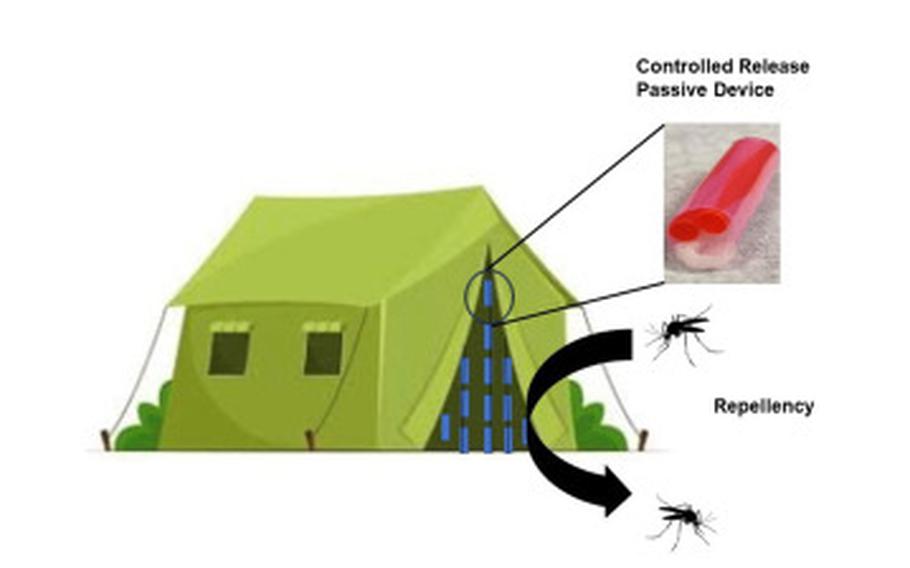August 25, 2021
We hear that pollinators are in dire straits while harmful, invasive insects appear to be multiplying. But how are the other bugs?
In recent years scientists have started to sound the alarm about a suspected “insect apocalypse”. Research that originally came from Europe suggests that arthropods – a category of invertebrates that include insects – are experiencing sharp decline in both diversity and abundance worldwide.
Half of the one million animal species that scientists predict will be critically endangered in the decades to come are insects, according to a 2020 paper in the journal Biological Conservation. Granted, there are many insects – an estimated 5.5 million species worldwide. The number is so high that only about a fifth of the species have been named.
Some researchers suggest that the dips may only be cyclical or regional, but most say there is no time to waste reversing worrying trends. And while local population data is not easy to come by, they say that many of the trends that are playing out around the world are likely to occur in the Chesapeake Bay region. These declines could also create obstacles, or at least complications, in efforts to restore the bay.
“We know different environmental stressors, climates, and local management are different in different locations,” said Daniel Gruner, associate professor of entomology at the University of Maryland. “But we can identify some major threats from these global studies that are likely to be pretty universal.”
Many of the factors that counteract environmental health in general – habitat loss, urbanization, and the widespread use of pesticides – have oversized effects on insects. In many ways, the health of insects is representative of the health of the entire ecosystem.
Insects recycle nutrients, balance pests, and spread seeds. Pollinators and soil-improving insects also make irreplaceable contributions to agricultural production.
“Insects are really good indicators of environmental quality,” said Alejandro Del-Pozo, assistant professor in the Department of Entomology at Virginia Tech University. “If we look at the streams and streams and want to understand whether something specific is going on, then we look at the insects.”
Tracking insect populations can be difficult, however, and trends vary widely by region and species. It can also be difficult to find historical population data collected using methods similar enough to allow comparisons over time.
Still, the 2020 paper states that between 5 and 10% of insect species have been lost over the past two centuries and the rate of loss is accelerating. A 2021 paper published by the National Academy of Science estimates that the annual decrease in insect abundance fluctuates around 1-2%.
Why the decline?
Several environmental factors could put insects at risk. Habitat fragmentation and destruction can greatly reduce certain populations and lead to joint extinctions – the disappearance of not just a single species, but also one or more dependent species. Climate change and an influx of invasive species should also play a major role.
And pollution, particularly broad-spectrum pesticide use, is believed to be a major culprit. A study published in Science magazine earlier this year found that the chemical makeup of modern pesticides, although used in decreasing amounts since the 1960s, has increased significantly in toxicity, particularly to insects and aquatic invertebrates. These pesticides also damage soil invertebrates like earthworms, beetles and ground-nesting bees, another study found.
Bonnie Raindrop, program director at the Maryland Pesticide Education Network for the Pesticides and the Chesapeake Bay Project, said she talks a lot about the effects these chemicals have on honeybees and other pollinators.
“But it’s important to connect the dots so people can understand [that] What happens to honeybees happens to every other insect, “she said.” Loss of the insect world would have devastating effects on all of us. “
Losers and winners
In the Bay region, some bugs are worse off than others. For example, the number of native ladybird beetles – including New York’s state insect, the nine-spotted ladybug – has declined sharply over the past 30 years.
Meanwhile, populations of alien species such as the multicolored Asian ladybug flourished. These so-called Halloween ladybugs were introduced into North America to eat plant pests. Now they compete for food with native ladybugs and have been known to flock into homes in October to hibernate.
Large silk moths, like the light green luna moth, are also much more difficult to find, according to one study. Scientists believe this is likely due to another alien species: a deadly parasitic fly that was introduced over a century ago to control gypsy moth caterpillars, but which now “controls” hundreds of other species of moth.
“I’ve seen only a few over the years,” Gruner said of large moths in the Saturniidae family, such as the red-brown Cecropia and the yellow-brown Imperial. “In the past we introduced [species to combat unwanted pests] without doing much testing to see whether they would also eat native insects.
Many arthropods play a specific role in a specific ecosystem. That makes them less resilient to change.
Maryland’s state insect, the Baltimore Checkerspot Butterfly, is one of those specialty insects. Its caterpillars feed almost exclusively on the white turtle head, a wetland plant with large white flowers. But the turtle head has become rarer as invasive plants, development, and sea level rise have altered many wetland habitats. Maryland now regards the checkerspot as an endangered species.
Tyler Rippel, a PhD student at Georgetown University, has studied how habitat loss in coastal areas can disrupt the delicate dance of insects in these ecosystems. Many are affected when, for example, a single species of seagrass takes over what was once a diverse wetland.
“People don’t really track this in coastal ecosystems unless they’re studying fish, oysters or mollusks or some type of agriculturally important species,” Rippel said. “Not many people are interested in these insects, so we wanted to point out how they affect the environment.”
Gruner said there are winners and losers in the dynamic world of insect populations, with species like the Asian tiger mosquito thriving in a modern Chesapeake watershed while some native species struggle.
In these scenarios, Gruner said, “Even if the overall abundance and biomass of insects proves stable over time, the underlying biodiversity is almost certainly declining.”
What can we do to help insects?
- Transform lawns into diverse natural habitats.
- Grow native plants.
- Reduce the use of pesticides and herbicides.
- Limit the use of outdoor lighting.
- Reduce runoff of soap, de-icer and driveway seals.
- Against negative perceptions of insects.
- Become an insect repellent.
- Support insect-friendly policies at the local level.
Source: “Eight Simple Steps Individuals Can Take To Save Insects From Global Decline,” from the Proceedings of the National Academy of Sciences, 2021.
The Chesapeake Bay Journal is a not-for-profit news organization dealing with environmental issues in the Bay region. Sign up for a free subscription to BayJournal.com.









